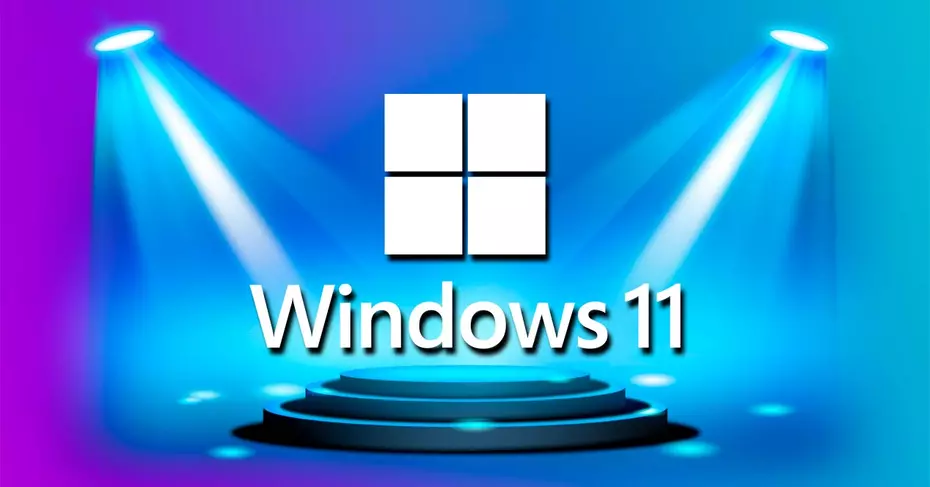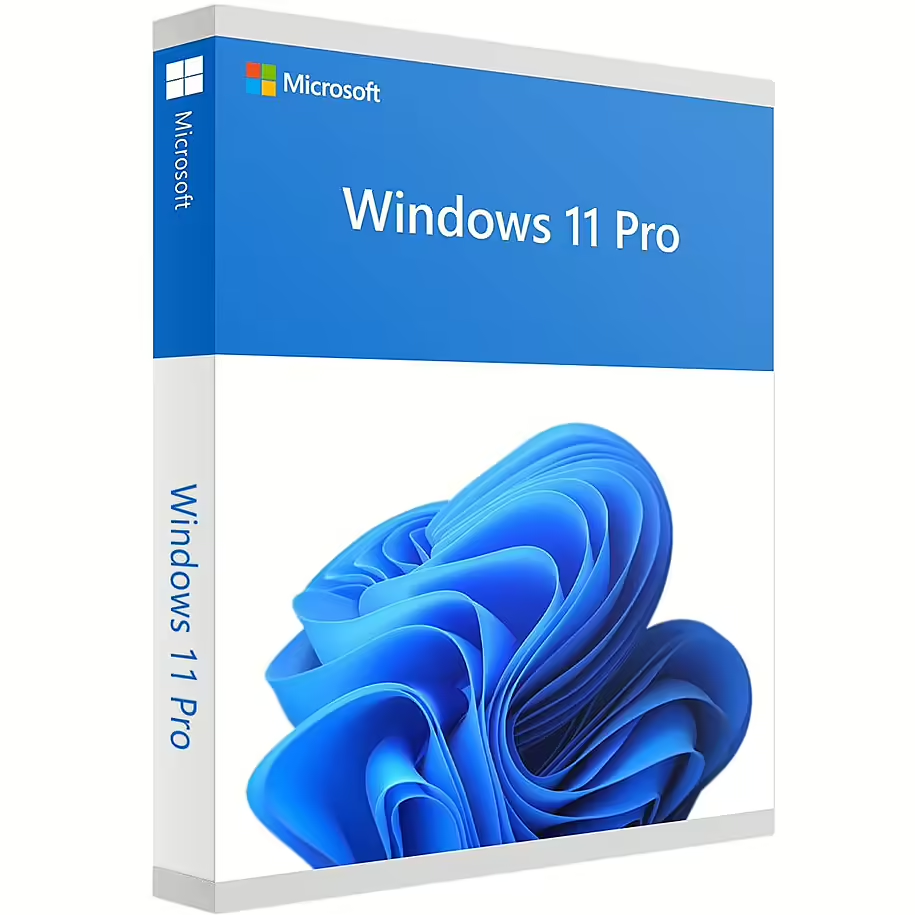Windows 11: How to upgrade, requirements, and issues
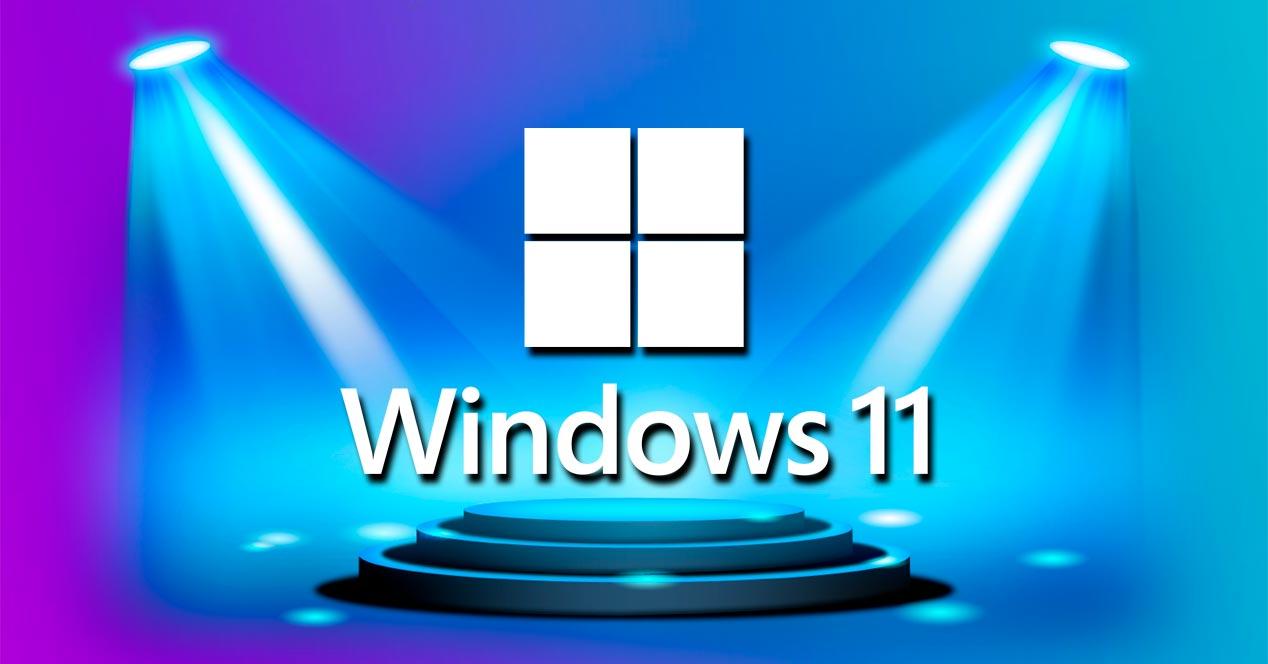
After several years with us, Windows 10 has begun to give way to Windows 11. This new operating system comes with quite a few changes in both its features and appearance, and the best part is that it’s available completely free for users of the previous operating system. If you don’t know where or how to download Windows 11 to install it on your computer, we’ll tell you all the ways you can do it , as well as clarify everything you need to know about the new operating system.
Windows 11 is the version of the operating system released in 2021 and has been available since early October 2021 with all kinds of changes, interface updates, and more. Why should we upgrade or why should we? Windows 11 features a completely revamped interface, with differences in design and menus. The taskbar as we knew it until now has disappeared. The Start menu has changed, and the icons have a new design, but we also have the Snap Navigator option, which allows us to reorganize everything we have open and switch from one tab or window to another, as you can see in the screenshot.
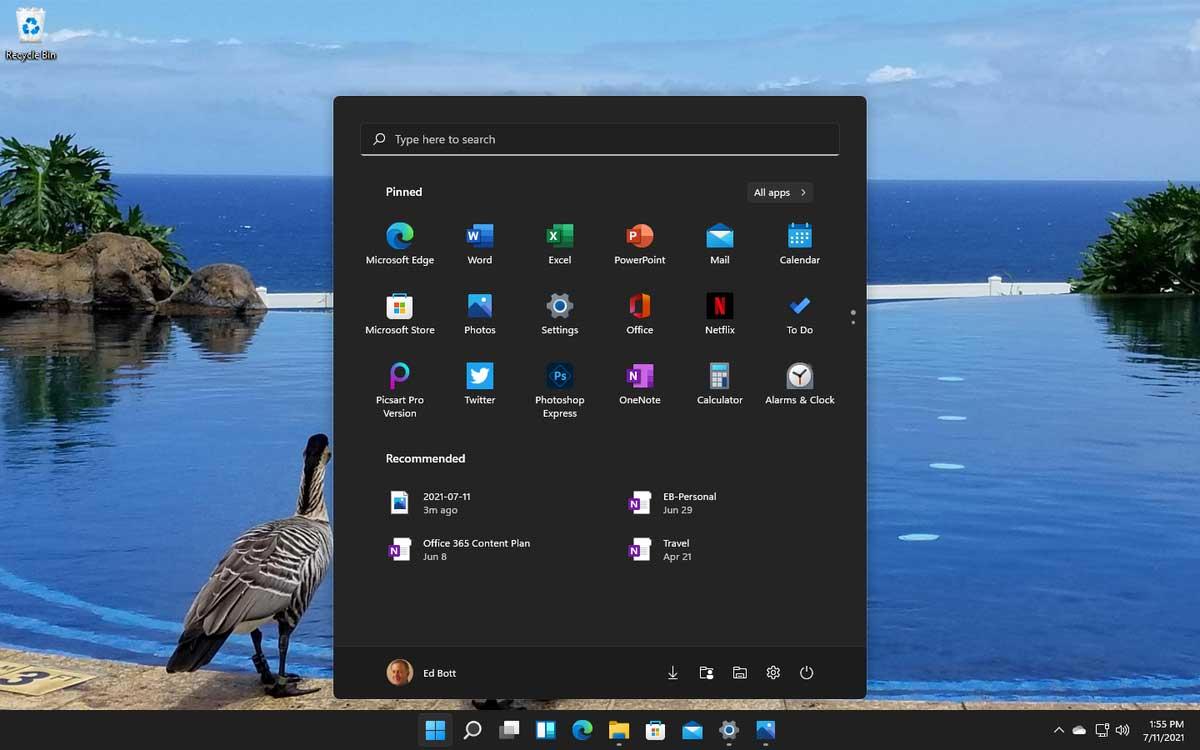
We also find other performance improvements, accessibility enhancements, and gaming-specific enhancements such as DirectX 12 Ultimate, Direct Storage, and Auto HDR. We’ll also be able to access other options such as customizable widgets where we can add news, to-do lists, and more. Many new changes can be enjoyed once we update to Windows 11 by following the steps explained below.
Requirements to update
To install Windows 11 on your computer, you must check that it meets all the requested hardware requirements. Keep in mind that if you have an older or limited computer, you may not be able to access this new operating system and will need to upgrade or replace it. Microsoft has announced that this update will be available on new eligible devices . This is important because if you’re going to buy a computer, you should make sure it already has Windows 11 installed, or if it doesn’t, that the new computer you purchase meets these hardware requirements.
- Processor
A 1 gigahertz (1 GHz) or faster processor with two or more cores on a compatible 64-bit processor or system on a chip (SoC) is required.
- RAM memory
As for RAM, ask for 4 gigabytes (4 GB) or more.
- Storage
A minimum of 64GB of free storage space is required to install Windows 11. Additionally, Microsoft advises that additional storage space may be needed to download updates or enable specific features of this operating system, so 64GB would be a minimum requirement.
- Graphic card
Must support DirectX 12 or later, with a WDDM 2.0 driver.
- System firmware
UEFI, compatible with Secure Boot.
- TPM
Trusted Platform Module (TPM) version 2.0.
- Screen
To run, Windows 11 requires a high-definition display (720p), 9″ monitor or larger, 8 bits per color channel.
- Internet connection
We’ll need to have the device connected to the internet to run updates and to download and use some specific operating system features. Additionally, the Windows 11 Home edition requires an internet connection and a Microsoft account to set up the device for first use.
In addition to all the hardware requirements we’ve read, we also need to consider the current version of Windows 10 our computer is running. Logically, the process for upgrading to Windows 11 involves having Windows 10 on our computer while waiting for the update and upgrade.
The company itself explains it, and it’s important to check the version of Windows 10 you have and make sure it’s up to date, as Microsoft says eligible devices must be running Windows 10, version 20H1 or later. That is, for the upgrade to Windows 11 to be successful and to enjoy the best experience with the new operating system, we’ll need to check whether our computer is sufficiently updated or whether we need to prepare it for it.
To check for Windows updates or see if you have any, follow these steps on your computer:
- Go to Start on your computer
- Open Settings on your computer
- Go to the Update and Security section
- Tap on “Windows Update”
Here, we’ll find a button that says “Check for updates.” You’ll see if there are any updates available. “Optional updates” will also appear. It’s a good idea to always keep your computer updated to the latest version or schedule automatic updates.
Other specific requirements
In addition to the operating system itself, Windows 11 comes with some specific features that will require additional requirements beyond those we’ve seen previously. Although the hardware allows for the operating system to be installed, there are some Windows 11 features or programs that may not work if our computer or additional equipment doesn’t meet the required requirements. Many of these are basic and common sense, such as having a camera if we want to make a video call or a microphone for voice typing, but there are also more specific ones. They are included in the following list provided by Microsoft.
- 5G support
If we want to use that compatibility , we will need a 5G compatible modem.
- Automatic HDR
Obviously, this mode requires an HDR monitor to work and for us to enjoy this feature. Check your monitor’s specifications to see if it’s compatible or not to see if you can use Windows 11 mode and enjoy, for example, Netflix series or movies.
- BitLocker to Go
Requires a USB flash drive to run. This feature is available in Windows Pro and later versions.
- Hyper-V Client:
Requires a processor with Second Level Address Translation (SLAT) capabilities. This feature is not available in all editions and is available in Windows Pro editions and later.
- Cortana
It requires a microphone and speaker to execute voice commands and receive information. Additionally, Cortana is currently only available on Windows 11 in Australia, Brazil, Canada, China, France, Germany, India, Italy, Japan, Mexico, Spain, the United Kingdom, and the United States.
- DirectStorage
Requires an NVMe SSD to store and run games that use the Standard NVM Express Controller and a DirectX12 GPU with Shader Model 6.0 support.
- DirectX 12 Ultimate
It will only be available with compatible games and graphics chips.
- Presence
Not all Windows 11 users will be able to access this “Presence” feature. To enjoy this feature, users must have a sensor that can detect human distance from the device or the intent to interact with it.
- Smart video conferencing
If we want to use this option, we need the appropriate and essential accessories , such as a video camera, microphone, and speaker. It’s logical, and most laptops include them by default, but we should check this if we have a desktop computer .
- Various voice assistants
They require a microphone and a speaker with which we can give orders or receive the response.
- Couple
Three-column layouts require a screen with a width of 1920 effective pixels or more.
- Mute and unmute audio
We can use this new feature included in the operating system from the Taskbar, but we’ll always need specific hardware : it requires a video camera, microphone, and speaker. The app must support this feature to enable or disable audio globally.
- Spatial sound
It requires auxiliary hardware and software to run, of course.
- Microsoft Teams
Microsoft’s popular video calling and chat tool requires a video camera, microphone, and speaker.
- Touch input
Requires a display or monitor that supports multi-touch.
- Two-factor authentication
If you want to use this two-step security system, you’ll need a PIN, biometric data such as a fingerprint reader or an illuminated infrared camera, or a phone with Wi-Fi or Bluetooth that can be connected to the device.
- Voice typing
Requires a PC with a microphone, to execute voice commands .
- Wake on Voice
Requires Modern Standby power model and microphone.
- Wi-Fi 6E
Requires a new IHV WLAN controller and hardware, and a Wi-Fi 6E capable router/AP.
- Windows Hello
Requires a camera configured for near-infrared (IR) imaging or a fingerprint reader for biometric authentication. Devices without biometric sensors can use Windows Hello with a PIN or a Microsoft-supported portable security key.
- Windows Projection
Requires a display adapter that supports Windows Display Driver Model (WDDM) 2.0 and a Wi-Fi adapter that supports Wi-Fi Direct .
- Xbox App
If we want to use this app for our video games, we’ll need an Xbox Live account . Some features of the Xbox app will require an active Xbox Game Pass subscription, which we’ll need to purchase to access all the features this video game service offers.
How to update or download Windows 11
There are several methods to upgrade from the operating system version available: via setup, via the ISO image, or via the wizard.
Windows Update
The most convenient way to do this is to go to Windows Update on your computer, where you’ll see if there’s an update pending or if your computer is compatible with Windows 11. If it is, as you can see in the screenshot below, you’ll see a message that says, “This PC can run Windows 11. Good news: Your PC meets the minimum system requirements for Windows 11. Specific timings for when it’s offered may change as we prepare.”
To get to this step we can do it easily: we open “ Settings ” on our Windows computer and go to the “Windows Update ” section where we can see all the details of features, versions, etc. Here we can update to the new version as long as it appears to us that it is available.
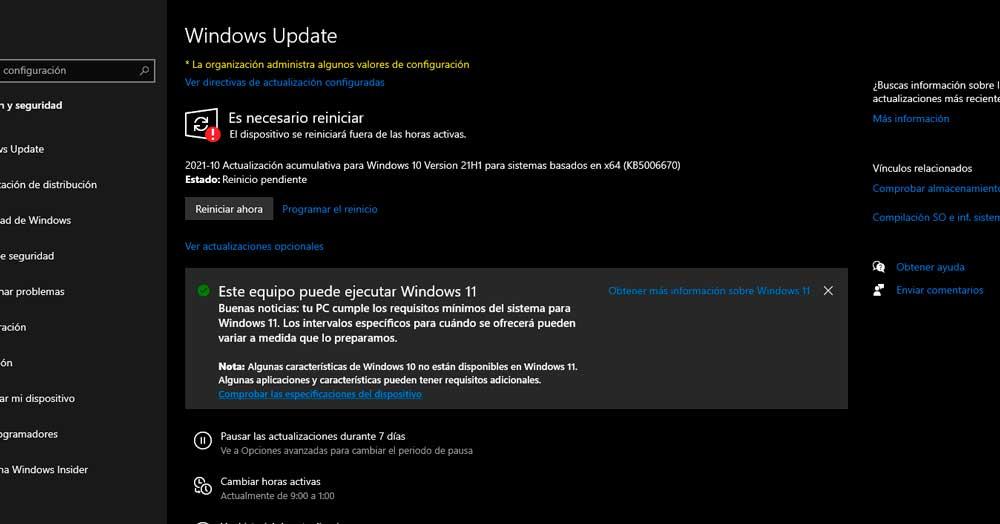
If it does not meet the requirements, you will see this indicated on the Windows Update screen itself, as shown in the image.
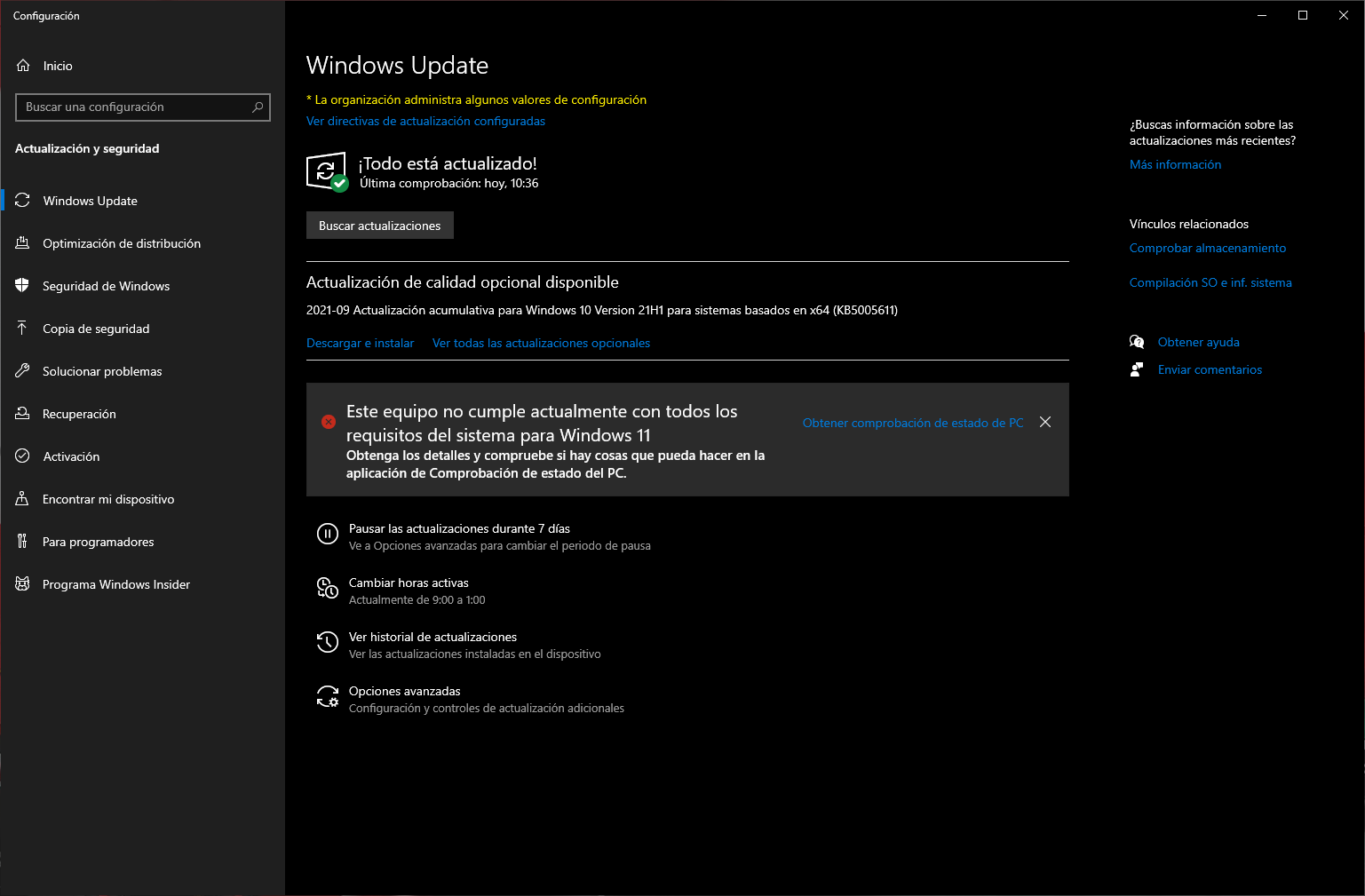
Update Wizard
If you don’t want to follow these steps or are looking for an alternative, you can follow a different path without having to use Windows Update. For example, the Windows 11 Update Assistant allows you to install the new version as long as you have a compatible computer. You must download it from its website, run it, and be patient to force the update.
We can download the Windows 11 installation wizard from the Microsoft website, although they explain a series of previous considerations: you must have Windows 10 installed in versions later than 2004 , you must have a license, and you must meet the specifications mentioned above.
Once you have this, we can download the wizard. Once it’s downloaded, select “Run” with administrator permissions, confirm, and tap “Accept and Install.” Once you’re done, tap “Restart now” to complete the installation on your computer.
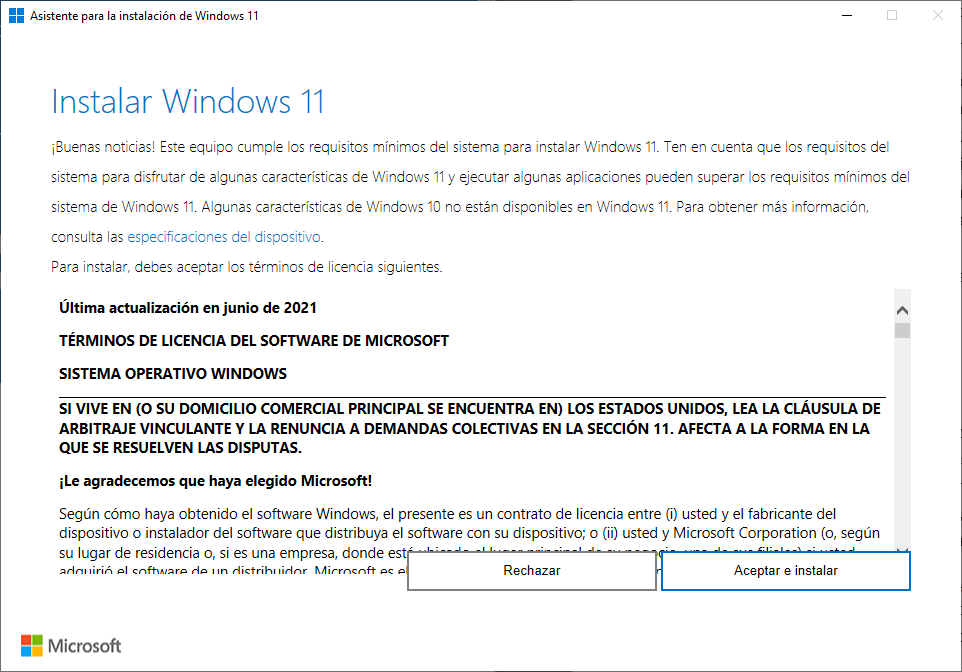
They also explain that installing Windows 11 for free will take a while and you’ll see your computer restart several times , so be patient until it completes.
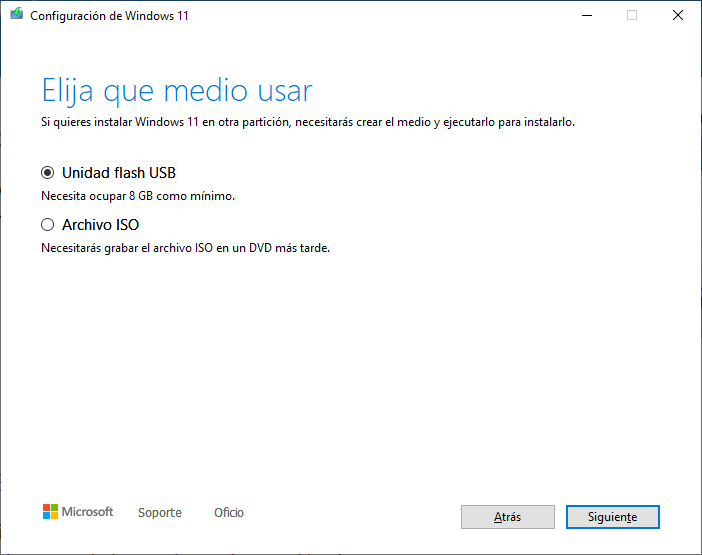
Media Creation Tool
Another option to upgrade to Windows 11 for free is to use the Media Creation Tool, which allows us to “force” the upgrade from scratch and manually, provided we have the image on a USB flash drive or an ISO file that we’re going to use to do so. It’s a bit more complex than the previous options, but we can download the Windows 11 disk image or ISO directly from the Microsoft downloads website. As they explain, it’s an ISO with multiple editions , so we can use the product key we have to unlock our own or the one that corresponds to ours.
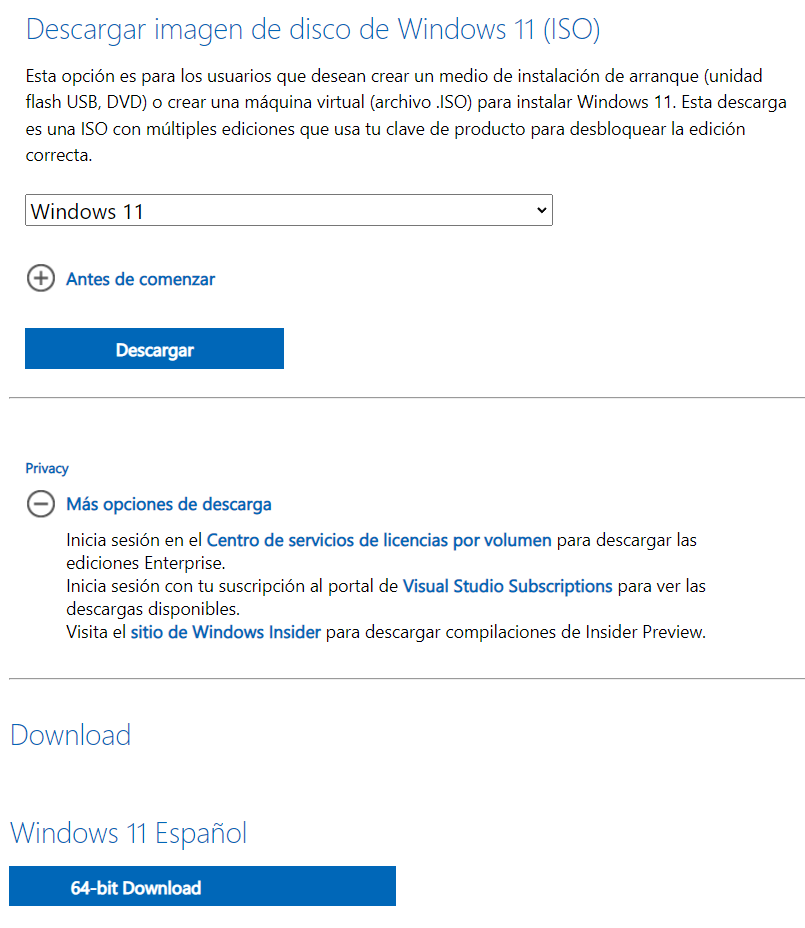
We can choose either a USB flash drive or an ISO file on a DVD , and Microsoft allows us to review all the steps we must follow for the installation. It will only take a few minutes, and we will have downloaded Windows 11. If we choose to install via a CD or DVD drive, here’s what you should keep in mind beforehand:
- We’ll make sure you have an internet connection to download the file.
- We must also have enough hard drive space on the external USB drive where we will download the installation file. In both cases, it is recommended that the media you choose be empty, as the content on the drive prior to burning will be erased during the process.
- On the other hand, we need a blank DVD of at least 8GB to create the boot disk, or failing that, a dual-layer DVD with enough capacity to create this boot drive. Otherwise, we may encounter the following Windows warning: “The image file is too large . “
- Obviously, we also need a DVD burner to create the disc and to read it later when we proceed with the installation or reinstallation, if we want to repair the system.
To proceed with the DVD installation, simply locate the downloaded ISO image, right-click on it, and select “Burn Disc Image .” Then, simply follow the installation instructions.
Upgrading an unsupported PC
What if your computer doesn’t have TPM 2.0 as the specifications indicate? According to a registered and currently working trick, we can safely bypass this requirement. As we explained in the previous paragraphs, you must have an 8th-generation Intel Core or an AMD Ryzen 2000 to install Windows 11, in addition to being able to enable Secure Boot and having TPM 2.0 built in or enabled. But what if I don’t have it? We can force it.
We must follow the same steps as if we had these requirements, but at some point the system will tell us that we don’t have a compatible computer. When it does, press Shift+F10 and type “regedit” to access the Windows Registry. Once inside, go to HKEY_LOCAL_MACHINESYSTEM and then Setup , and create three new keys with the value 1: BypassTPMCheck, BypassRAMCheck , and BypassSecureBootCheck .

Once this is done, we can continue with the installation. Is this a good idea? It’s best to continue using Windows 10 if you don’t have a compatible computer and forgo the new features, as you may run into problems in the future or encounter compatibility and performance issues. Keep in mind that Windows 10 will continue to receive updates until 2025, so there’s still plenty of time to upgrade.
Another option is to use Rufus. This is an application that has long been used by IT departments to quickly create bootable Windows installers. With the latest beta version, as reported by Ars Technica, we’ll now have the ability to remove the Microsoft account requirement, as well as other workarounds. These include bypassing systems that lack TPM 2.0, or those with less than 4GB of RAM or 64GB of storage.
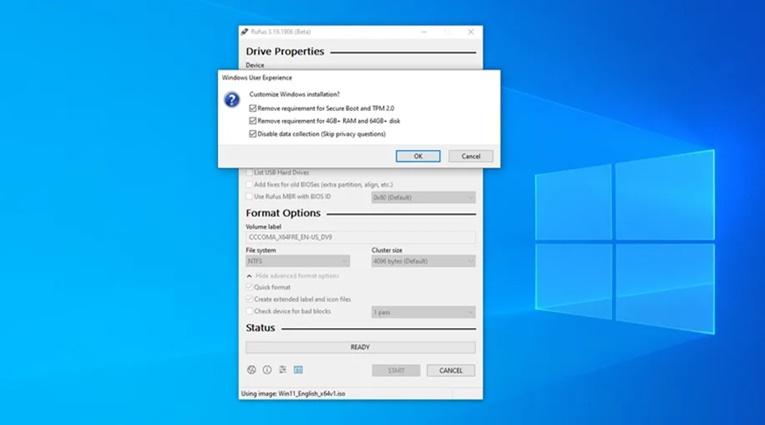
Simply download the Windows 11 ISO image, create the installation media with the new Rufus options, and install it, taking care not to be connected to the internet so that the installer offers you the option to use a local account.
- The first thing is to download and install the Rufus tool ( latest version ).
- Now we will proceed to download the Windows 11 ISO from the official Microsoft repository.
- We open the latest version of Rufus.
- We select the Windows 11 ISO that we just downloaded.
- And in the Extended Installation of Windows 11 section we will choose Create extended installation of Windows 11 (No TPM, No Secure Boot, 8GB – RAM).
- Finally, Start.
Windows 11 Editions
As with all Microsoft operating systems, Windows comes in several versions designed for different types of users and with different features. In fact, we may have more or fewer features, more or less support for updates, and other changes that can be crucial in our daily lives. For this reason, it’s best to choose the right version or edition to avoid regrets later.
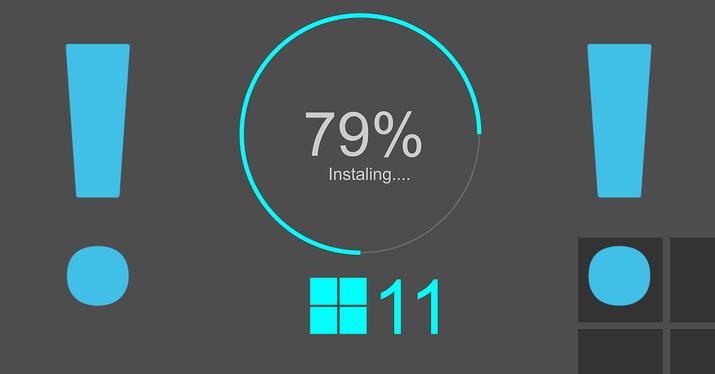
- Home: The version for most regular users, i.e., those who use Windows on their home computers. User level without advanced features.
- Pro: This version is for professional users, whether business users or those who need to perform advanced actions with the operating system. It includes features not found in the Home version, such as BitLocker access, assigned access, dynamic provisioning, group policies, a dedicated Microsoft Store for businesses, Active Directory and Azure Active Directory, and Windows Information Protection (WIP).
- Enterprise: Very similar to the Pro version, but sold to businesses, primarily large ones.
- Education: Microsoft always has education versions of its systems that are quite similar to the Home edition, but with special additions for these sectors.
- LTSC: These are versions with longer support periods, meaning they receive security patches for much longer. At this time, there’s no definitive release date for Windows 11 LTSC. The latest such release is Windows 10 LTSC, version 21H2.
Windows 11 versions
Microsoft is working tirelessly on Windows 11 to ensure the operating system continues to receive improvements and improve performance. This means that the platform is receiving numerous updates, which are worth knowing about. The first version was 21H2 and was codenamed Sun Valley, but that was just the beginning.
In September 2022, the first update was released, remaining within version 22H2, for which Microsoft kept the codename but added a number 2: Sun Valley 2. This update incorporated several new features, such as the restoration of the previously removed drag-and-drop feature on the taskbar . A power saving mode feature was also introduced on the taskbar, and live captioning was added.
To strengthen security, this update introduced the Smart App Control (SAC) feature, which allows greater control over the applications installed on your device and helps block untrustworthy ones. The focus system was also improved, and a new app, Clipchamp, was added.
Moment 1 followed in October 2022. Moment 2 was released in February 2023, a much more prominent update with a host of new features. This release added support for the iOS mobile app , a redesigned Quick Assist tool, a widget panel with the ability to use third-party apps, and more options and recommendations in the settings menu. With this update, Microsoft continues to show that it’s listening to users and is returning more features to the taskbar, in this case the search system.
Should I continue using Windows 10 or upgrade to Windows 11?
Sometimes, especially when it comes to technology, we’re driven by the desire to have the latest version and technology as soon as possible. After the release of Windows 11 , you may have been considering whether it’s worth making the jump now, or whether the new features won’t be worth it if you’re used to using Windows 10 consistently. Is it worth it? You’ve probably asked yourself: should I continue using Windows 10 or upgrade to Windows 11? What’s new? Is it worth it? We’ll answer all these common questions in the following paragraphs so you know what to do.
To help you make your decision, let’s weigh the pros and cons of upgrading to Windows 11. First, we need to know if your computer is compatible with Windows 11, if you can install it, and if you can enjoy all the features and benefits of the new version of the operating system. You can also learn about the improvements or new features and consider whether it’s worth the jump, and whether the changes will be useful or appealing to you.
The first criterion for whether you stay on Windows 10 or upgrade to Windows 11 won’t really depend on you, but on the minimum installation requirements for Windows 11. If you want the latest operating system, you’ll need an 8th-generation Intel Core processor or an AMD Ryzen 2000 processor or newer. You’ll also need 4GB or more of RAM and 64GB of internal storage, or some additional space if you want to install all the features or later updates, Microsoft warns. Additionally, the system firmware must be UEFI and compatible with Secure Boot.
Considering that the 8th generation of Intel Core processors arrived in 2017 and the Ryzen 2000 processors arrived in 2018, you really need a fairly modern PC to be able to install Windows 11. Or, at least, you’ll need one if you want it to run smoothly and have no problems with the computer performing well and all the Windows 11 options working well. Not compatible? There are some ways to try to force the installation, but if it’s not officially supported, it’s better to stay on Windows 10 and wait for it to be, since forcing it can lead to poor performance, compatibility issues, make your computer run slower, etc.
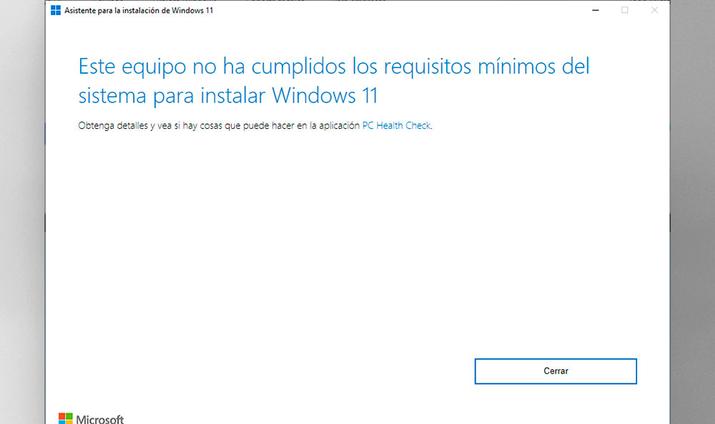
If you have any doubts about whether you meet these requirements or not, you can choose to download the Windows 11 Installation Assistant . Running the Windows11InstallationAssistant.exe file will launch a wizard that will guide you through the process and stop you if it finds any incompatibilities with the installation process.
Reasons to upgrade
If you meet all of the above requirements, you’ll know you can upgrade and your computer is ready for the jump to Windows 11. You’ll need to weigh the advantages of Microsoft’s new operating system. But it’s up to you to decide: is it worth installing Windows 11, or are we better off waiting and using Windows 10 for a few months if it runs smoothly and comfortably?
If you have a compatible device, you can upgrade to Windows 11 to try it out . However, there’s a catch. After the upgrade, you’ll only have 10 days to go back to Windows 10. After that, you’ll need to perform a clean install to return to your previous operating system. That’s why we want you to be aware of whether it’s worth it or not.

If you’re going to use your computer as a PC gamer, then this upgrade is quite attractive for you. Windows 11 has incorporated some features like Auto HDR , so your games look more vibrant, regardless of when they were released, and Direct Storage helps your GPU and SSD communicate faster, to launch games faster and eliminate or reduce loading times.
For multitasking, Windows 11 apparently does a great job of managing memory to favor the app windows you have open and running in the foreground . This should ensure they get more processor power over other system resources. Additionally, RAM can remain active in sleep mode, making your PC wake up up to 25% faster from this mode.
If you’re thinking about a makeover, Windows 11 brings a new, more Mac-like interface to the operating system, featuring a clean design with rounded corners and pastel tones. For example, the taskbar
Reasons to stay with Windows 10
Windows 11, due to its recent release, still has many bugs and issues that could affect your system’s performance, even if it meets the aforementioned requirements. These are generally bugs that will be fixed in the coming months, and Microsoft will release patches to address any performance issues or minor glitches. But we can avoid them until an update becomes essential. If you want to avoid these errors, you can do so. In this sense, you can choose to be safe and wait for them to be gradually resolved. For example, AMD CPUs initially had driver compatibility issues, although these have been gradually being fixed.
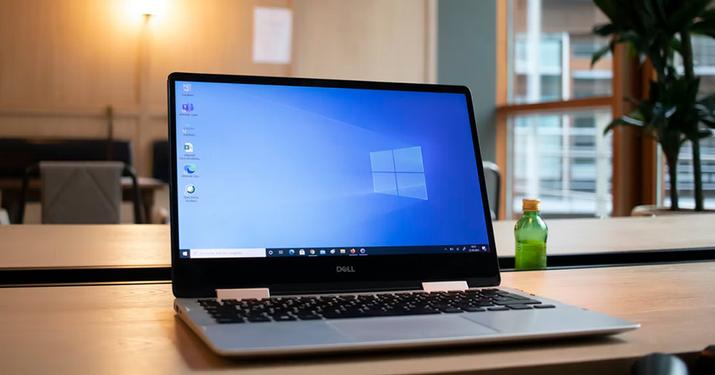
We mentioned earlier the potential design improvements in Windows 11, but this also comes with some drawbacks. Perhaps most notably, Windows 11 is no longer supporting Live Tiles . If you really want to see the information on these live tiles in the Start menu at a glance, then Windows 10 is the best option.
Other reasons for not upgrading will depend on how you search or whether you use the voice assistant. Microsoft has collapsed the search box into an icon and also removed Cortana’s voice assistant features in Windows 11 , and if you want to use Cortana, you’ll need to download the additional app.
I hate Windows 11, can I go back to Windows 10?
It’s possible to downgrade your PC to Windows 10, but only for the first 10 days after installing Windows 11. This means you only have that period of time, so if more time has passed, forget about it unless you go through a slightly longer process, which we’ll walk you through in this article.
Within Windows Settings, under “System,” you can recover Windows 10 by clicking “Recovery .” This allows you to roll back to that version and, at the same time, explain to the wizard why you’re doing so. It’s important to explain why so Bill Gates’ company takes note and doesn’t hit us with annoying updates in the future.
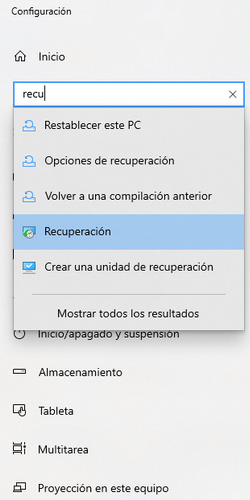
Before completing the reinstallation, your computer will warn you that you’ll lose the apps and changes you’ve made since installing Windows 11. Make sure you’re happy to lose those changes. Finish by clicking “Go back to Windows 10” to complete the process. A key tip is to back up your files, whether they’re videos, photos, or documents, to an external device.
Return to Windows 10 after 10 days
If you didn’t know that it wasn’t possible to go back so easily after 10 days, or if you simply haven’t gotten used to Windows 11, it is possible to go back to the previous version. This is a more complicated process , as Microsoft isn’t interested in users simply going back. Here’s how to go back to Windows 10 after 10 days.
The process involves reinstalling Windows 10 from the official version and then installing it manually. Although it may sound difficult, we’ll guide you through the process so you don’t get lost in the various options and windows. The two easiest methods are as follows, although there is a third, more elaborate way.
From the computer
The first thing to do is visit the official Windows 10 download website . You’ll see two submenus; the second one is the one you should focus on. There, click “Download the tool now . “

Open the downloaded file by clicking on it. Allow it to make changes and then accept the terms and conditions. The “Getting things ready” screen will immediately appear . Once it’s done, select “Upgrade this PC” and the download will begin. In the meantime, you can use your computer.
If you’ve completed the download, click “Next” and accept the terms again. Now pay attention because a screen titled “Choose what to keep” will appear, where you must select “Nothing” ; this is the crucial part of the operation. Once you’ve chosen that option, continue to the “Ready to install” screen and, finally, click “Install” to begin the installation.
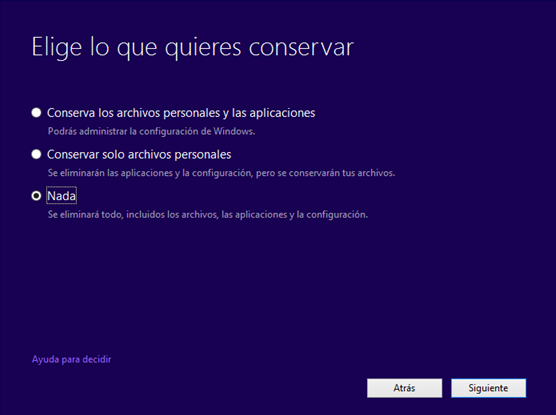
When the installation is complete, your computer will restart. You’ll then need to reconfigure it as if you’ve never used it before. If you weren’t happy with its configuration, maybe it’s time to give it a makeover.
From a USB
Installing Windows 10 from a USB drive is especially useful if you want to install it on multiple devices. The steps are practically the same as on a computer: download the tool, but click “Create installation media” instead of updating your computer.
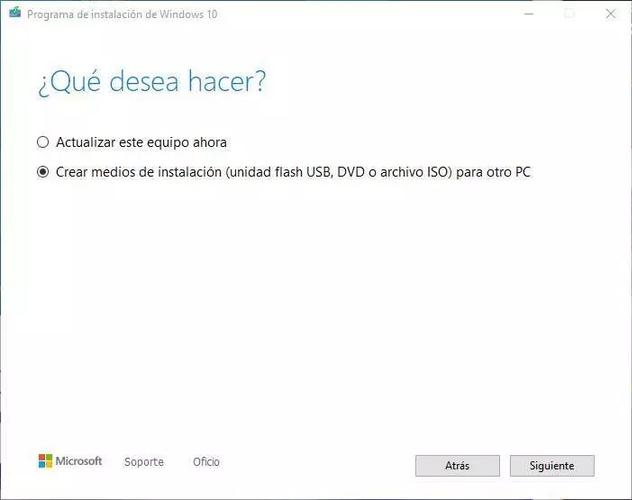
Once in “Create Installation Media ,” continue through the language and edition windows until you reach “Choose which media to use ,” where you can use either a USB flash drive or an ISO file. Click the former, but keep in mind that you must have 8GB of free space on the device. Choose the flash drive you want and wait patiently for it to copy to it, as it can take hours.
Insert the USB into your PC’s boot drive, choosing to boot from USB. Choose the correct drive and continue. A screen will then appear to select the operating system and keyboard you’ll be using. Select what you want and continue to a screen that will allow you to “Install” and follow the steps as if you were using a computer. From all the licenses Windows offers, which vary in price, choose the one you want and continue to the typical final screen for simple or advanced updates. These are the final details for returning to Windows from the USB.
What is Windows 11 SE?
Windows 11 SE is the company’s operating system designed for use in schools , classrooms, and in general education settings. It’s a tool designed for teachers who want a simple, distraction-free environment for students, and also for school IT administrators who want devices that are easy to deploy, manage, and secure, and adapt well to the changing conditions of the school year. It can be managed from the cloud with Intune for Education, although it also lacks some Windows 11 features.
It runs on web-based devices that use essential educational apps and with simpler configurations, as some are possible and others are not. Microsoft Office 365 is already pre-installed. Although it doesn’t have its own Microsoft Store, in addition to the apps installed by default, third-party applications are allowed if you want to submit your own, something we’ll explain later. The goal is for students to study as efficiently as possible, without distractions and with optimal educational resources.
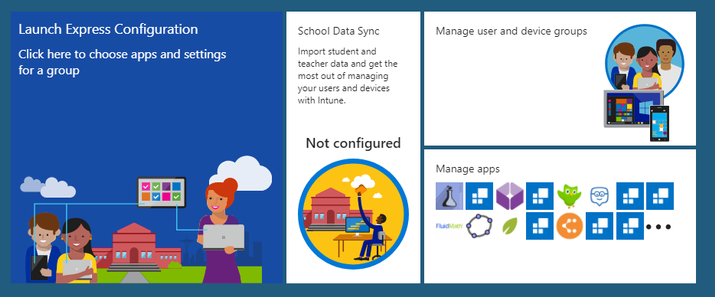
It will feature a new, colorful Bloom default wallpaper and changes to the way apps are presented . It also updates silently so it doesn’t disturb you while you’re working. You can do this outside of school hours so you don’t disrupt classes.
How it differs from Windows 11
Only by considering that it has been specifically designed for a purpose will we know that, while it may share similarities with Windows 11, it also has important differences. Therefore, let’s discuss the main differentiating features we should keep in mind and why these make it the perfect operating system for education.
Windows 11 SE is a version of the operating system designed specifically for education. It’s designed to adapt to the changing needs of children’s learning, avoiding unnecessary distractions. Apps will only open in full-screen mode , with the ability to use up to two apps at a time. There are only two layouts in which two apps can be displayed at once. It doesn’t have widgets to avoid distractions, and setup is much simpler.
The main features it has that differentiate it from other versions of Windows are several, starting with the fact that it is designed for low-power computers , as it has been optimized to work with 4 GB of RAM and 64 GB of storage. Only manufacturers can install it on computers specifically for educational purposes. The computers will be connected to the cloud , so that outside of school, work will only be possible offline . At school, everything done can be synchronized through OneDrive.
Edge will be included with Chrome extensions by default so you can use them seamlessly. Documents will also be automatically backed up. Another notable feature is that it comes with several built-in apps , and only the apps chosen by the school’s IT administrators can be installed. It’s also designed to use less battery power and ensure the devices last all day.
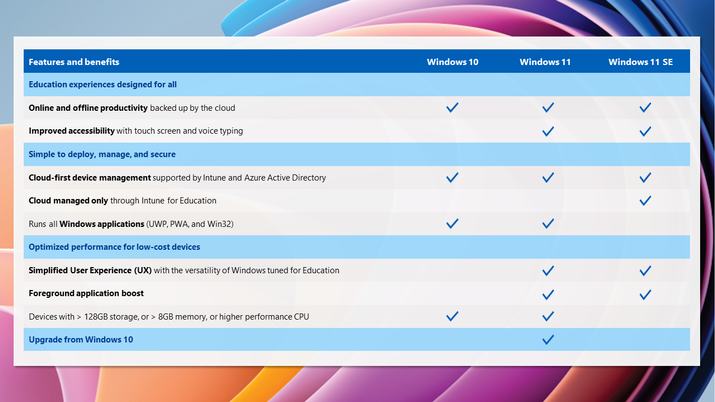
Windows 11 SE comes with several apps included by default, such as Office, OneNote, and Teams, designed for schools and initially only in English. More apps can be installed beyond those allowed, at the discretion of the school’s IT staff.
Among the apps you can run with the Intune for Education portal are:
- Chrome
- Dragon Assistant
- Dragon Professional single
- e-Speaking Voice and Speech recognition
- NaturalReader
- Jaws for Windows
- Kite Student Portal
- NextUp Talker
- NonVisual Desktop Access
- Read and Write
- SuperNova Magnifier & Screen Reader
- SuperNova Magnifier & Speech
- Text Aloud
- Zoom
- Zoomtext Fusion by AiSquared
- ZoomText Magnifier/Reader
Apps that run in a browser, such as Progressive Web Apps (PWAs) and web apps, can be run without any changes or limitations. This is not the case with apps that require installation , as installation will fail if attempted. You can contact Microsoft to enable these.
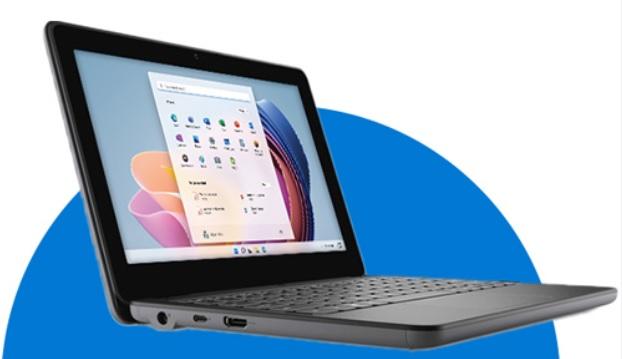
Additionally, anyone at the school can submit a request to add their own apps here by signing in with the school account as user@contoso.edu. If the request meets the requirements , the company will work with the independent software vendor to test it, and when it’s ready, Microsoft will update it. It will be added to Intune for Education, and you’ll need to assign it to your devices to start using it.
How to get it
One of the main differences from other operating systems is that this one is only available pre-installed on OEM (original equipment manufacturer) devices . This installs the operating system and makes devices available for purchase by schools and educational institutions.
Therefore, you can use it if your children’s school purchases devices with Windows SE or if you buy a Microsoft Surface with the operating system already installed. The first computer to come with it is the Surface Laptop SE , a device with an 11.6-inch HD TFT LCD panel powered by an Intel Celeron N4020 or N4120 processor and 4 or 8 GB of RAM with 64 or 128 GB of internal storage, as well as a webcam and a battery life of up to 16 hours.
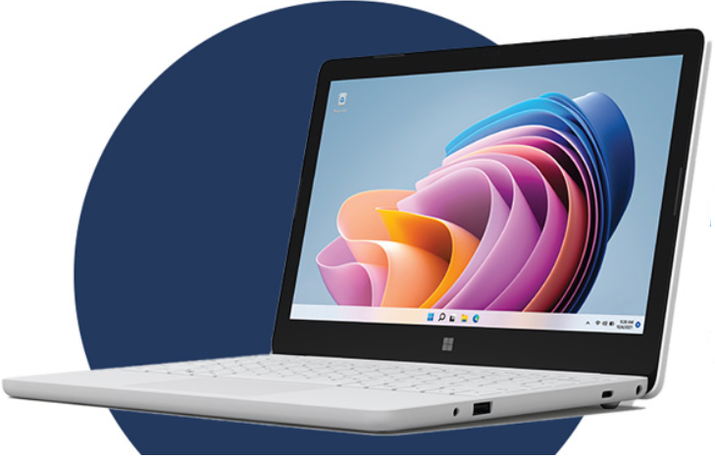
It will be available in models from Acer, Dell, Asus, Lenovo, and other brands with AMD and Intel processors, but only the less powerful ones designed for this type of use. It’s not optimized for the general public, but rather for education, so it will only be sold to businesses and educational institutions for computers of different brands with basic specifications.
more info: 0034677285503 (whatsapp)

